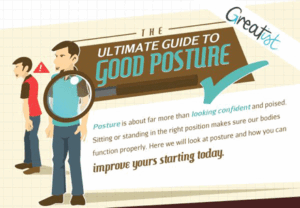What Is the “End Feel”?
Some of the most valuable assessment information is derived from relatively simple procedures such as passive range-of-motion tests. While many massage practitioners have been exposed to the fundamental concepts of active and passive range-of-motion testing, most have not learned how to use this information effectively in a clinical environment.
In this article, we will focus particular attention on the “end feel” that is evaluated during passive range-of-motion testing. Valuable information can be derived from thorough examination of the end feel.
To perform a passive movement evaluation, the practitioner instructs the client to relax as much as possible preceding the movement. It is important to have the greatest degree of muscular relaxation prior to beginning the movement, to improve the accuracy of the evaluation and eliminate muscular effort as the cause of any pain that is felt.
One of the most important factors to investigate with passive range-of-motion testing is the end feel. The end feel is the quality of movement perceived by the practitioner at the very end of the available range of motion. The end feel can reveal a great deal about the nature of various pathologies. James Cyriax, the British orthopedic physician who developed one of the most commonly used systems for physical examination, specified six different end feels when he first described them in his writings.1
Bone to bone – This is the sensation when motion is stopped by two bones contacting one another. An example is the end feel for extension of the elbow.
Muscle spasm – When muscles are in spasm, they may abruptly halt motion prior to what should be the normal range of motion. It is likely that pain will be felt at the end of this range, because the muscle in spasm will be stretched.
Capsular – This is the end feel described for range of motion limited at the end by the joint capsule. The sensation often described is a “leathery” feel to the end of the motion, such as in external rotation of the shoulder. A true capsular end feel occurs when the joint capsule is the primary limitation to the end range of motion. Some authors have called this end feel the “tissue stretch” end feel and extended it to other tissues, such as muscles, that may stretch normally at the end of their range of motion. An example of the tissue stretch with muscles would be hip flexion with the knee held in extension, in which motion is stopped by the hamstrings.
Springy block – This end feel is the sensation of motion stopping short of where it should, accompanied by a rubbery or springy sensation at the end. It occurs most often in joints in which a piece of loose cartilage (like the meniscus in the knee) may be blocking full motion and causing the limbs to “bounce back” a bit.
Tissue approximation – This is the end feel in which motion is stopped by two masses of soft tissue pressing on one another. An example is in flexion of the elbow, in which the elbow flexors and wrist flexors press on each other to limit further motion.
Empty – This end feel has no mechanical limitation to the end of the range, but the client will not let you go any farther because of excessive pain. An example would be in shoulder impingement, in which pain from the supraspinatus tendon being compressed will limit how far the arm can be abducted. Mechanically there is no further restriction, but the pain will prevent the individual from allowing further motion.
The end feel for a particular joint may be the joint’s normal end feel, or it may be pathological in nature. For example, in elbow extension, the normal end feel would be bone to bone as the olecranon process contacts the posterior aspect of the olecranon fossa. If you were performing a passive range-of-motion evaluation with your client and you got a tissue stretch end feel for the elbow in extension, it would most likely indicate some form of restricted range of motion that should be treated.
On the other hand, if you were evaluating medial rotation of the shoulder, you would expect a tissue stretch end feel, and that would be normal for medial rotation. If you performed medial rotation and got a bone- to-bone end feel, it would be abnormal for that joint and would certainly indicate a more serious joint pathology requiring evaluation by another health professional.
Passive range-of-motion evaluation can provide a great deal more information than just how far an individual can move his/her joint. When you know what kind of end feel should be apparent with each joint, you can effectively evaluate and analyze pathological limitations to motion.
Reference
- Cyriax J. Textbook of Orthopaedic Medicine, Volume One: Diagnosis of Soft Tissue Lesions, 8th ed. London: Bailliere Tindall, 1982.
Ready to #feelbetter?
You're just a click away from a wicked good massage!
-

60 Minute Massage Gift Card
$170.00 Add to cart -

90 Minute Massage Gift Card
$255.00 Add to cart -

Mini Aer Small Room Air Purifier
$149.00 Add to cart -
Sale!

Thera-Pearl Sports Pack/Hot Cold
Original price was: $14.99.$12.99Current price is: $12.99. Add to cart -

3 Somadome Sessions Gift Card
$135.00 Add to cart -

TheraBand CLX Connective Loop
$14.99 Select options -

6 Somadome Sessions Gift Card
$270.00 Add to cart -
Sale!

Biofreeze
Original price was: $14.99.$12.99Current price is: $12.99. Add to cart
Passion Mountain
I was at an event recently and was asked by somebody how I could STILL be so passionate for what I do. He said, “What I mean is that you talk about what you do with the passion of child flipping through a new pack of baseball cards. I wish I was that passionate about…
Read MoreFish You Should Scale Back On
New Englander’s love their seafood and we deepen our love affair every summer when our favorite crustaceans, ‘lobstah’ is a plentiful. But what is the best seafood for us and what are the ones that we should be staying away from regardless of how yummy they may be? Monterey Bay Aquarium has combined data from…
Read MoreSports are a Great Metaphor
It’s no secret that my life has always revolved around athletics. From my early days playing pop warner football, through my college years of lacrosse and on into the various community leagues since, being part of a team has always been where I feel most comfortable. What I enjoy most about being part of a…
Read MoreWhat is an Expert?
“An expert is someone widely recognized as a reliable source of technique or skill whose faculty for judging or deciding rightly, justly, or wisely is accorded authority and status by their peers or the public in a specific well-distinguished domain.” – Wikipedia This past month I flew to Atlanta to present a few classes in…
Read MoreThe Power of a Hug
Originally Posted 5/1/2014; following the 1 year anniversary of the Boston Marathon Bombings and our mission to rebound after these horrible attacks on our city. We helped orchestrate the ‘One Run for Boston’; a 3328.2 NON-STOP running relay from LA to Boston, raising over $500K for the victims and survivors of the events of 4/20/2013.…
Read MoreTips from the Table
Without fail, every marathon season, I am asked by my patients, what kind of advice I would offer up to them as they prepare to run the Boston marathon. I first admit that I have never (nor will ever) run a marathon, but given my unique insight of spending 1000’s of hours alone in a…
Read MoreShoulder Impingement
The glenohumeral joint is a highly complex articulation. It has the greatest range of motion of any joint in the body. However, its increased motion occurs at the expense of stability, requiring the soft tissues to play a more critical role in maintaining joint integrity. As a result of increased mechanical demands, numerous soft-tissue injuries…
Read MoreTrain, train, train. Train of fools.
In my seventeen years as a massage therapist, I am still amazed by some of the things I see in my office. Being situated 1/10th of a mile from the finish line of one of the most prestigious marathons in the world, the Boston Marathon, we see more than our fair share of runners coming…
Read MoreAchilles Tendon Disorder
Achilles Tendon Disorder Massage therapists see many clients with active lifestyles. Running, jumping, dancing, climbing, or any number of other activities can put serious stress on the Achilles tendon (AT). AT disorders also can contribute to biomechanical disorders in the foot and lower extremity. That is why it is important for the massage practitioner to…
Read More


